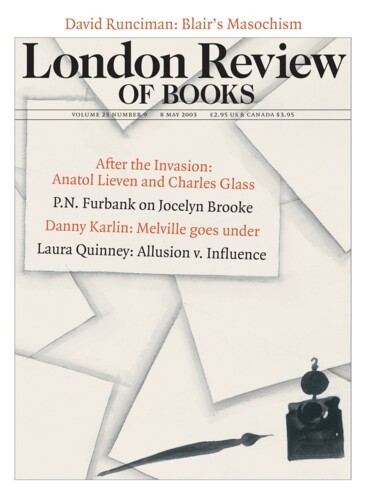It’s Thomas Pynchon’s birthday today: he’s 66. By today, I mean the date at the bottom of the page, not the day I’m writing this, or whenever you may be reading it. It’s more appropriate that way, since the man doesn’t exist, in public, other than on the printed page. He has only been photographed twice, both times against his will, in the forty years since his first novel, V., was published. A film about him, Thomas Pynchon: A Journey into the Mind of , is showing at the ICA from 2 May until 31 May. The title is an allusion to an essay by Pynchon that appeared in the New York Times Magazine in June 1966. ‘Journey into the Mind of Watts’ was written after Leonard Deadwyler, a young black man from that neighbourhood, was shot by an officer of the LAPD on the night of 7 May 1966. He was in his car with his pregnant wife and a friend. The Watts Riots had taken place the previous summer. The initial ‘P.’, which stands for ‘Pynchon’ but also for ‘paranoia’, brings to mind V., the elusive and transmigratory object of desire in the novel to which she gives her name. The angle brackets make it look like an HTML tag, suggestive not only of the hypertextual (non-linear) nature of Pynchon’s fiction, but also of the many, many websites that are devoted to him and his work.
Because the man himself is forever unavailable, the filmmakers, Fosco and Donatello Dubini, had to construct their narrative by interviewing other people, several webmasters among them, as well as an ex-girlfriend (Chrissie Wexler), George Plimpton and other critics, and, best of the lot, Irwin Corey, the comedian who impersonated Pynchon to collect the National Book Award for Gravity’s Rainbow in 1974. The talking heads are interspersed with archive footage of rockets taking off, or blowing up on the launch pad; subway trains; houses in which Pynchon has lived; 1950s psychology experiments; Vietnam protests; the shooting of Lee Harvey Oswald; photographs of Pynchon as a young man at Cornell and in the US Navy; and traffic, lots of traffic. The soundtrack is provided by the Residents, ‘the world’s most famous unknown band’, an anonymous group of avant-garde multimedia artists from San Francisco. At the very end we get to see the two unauthorised pictures of Pynchon. One of them is the handiwork of a hack called James Bone, who tracked the novelist down and took him crassly by surprise; he still seems perplexed that Pynchon wouldn’t shake his hand afterwards. The other is a few seconds of footage taken by CNN. In Thomas Pynchon it is played over and over as one of the webmasters ‘analyses’ Pynchon’s appearance: he has a pen in his pocket, so he’s still writing. Nice one, Sherlock.
There is pointless speculation about his life: might he have travelled to Mexico in 1962 on the same bus as Lee Harvey Oswald? Does the interest in mind-control experiments in Gravity’s Rainbow stem from Pynchon’s having worked, with Timothy Leary, for the CIA, distributing LSD among the rebellious youth of California to incapacitate the enemy within? Almost certainly not. It’s a shame – and one of those things some people like to call ‘an irony’ – that Pynchon’s assiduous removal of himself from the world should have resulted in such fruitless interest in his person. It is, nonetheless, a phenomenon predictable from his fiction: wild and wonderful narratives wrought to conceal the absence and chaos that constitute ‘reality’. Inventing a pattern where there is none is something that stories and conspiracy theories have in common. Pynchon’s novels at once draw attention to the inadequacy of fiction as a way of describing the world and demonstrate why it’s invaluable. They’re also incredibly funny, though you wouldn’t necessarily pick that up from watching the Dubinis’ film.
Thomas Pynchon gets closest to the mind of P. when it forgets about biography and concentrates on the novels. Irwin Corey reads from Gravity’s Rainbow, his voice gravelly and hinting at craziness. Some historical background is filled in; attention is drawn to the continuity between the Nazi rocket programme and that of the US in the early years of the Cold War, not least in the person of Wernher von Braun, and to that between Nazi and US experiments testing the human body to the limits of its endurance – at altitude, say, or on acid.
The trouble with drawing connections of this kind is that once you start looking for them, they’re everywhere – see my first paragraph. Or what about this? In ‘Journey into the Mind of Watts’, Pynchon wrote of the then Mayor of Los Angeles, Sam Yorty, that he was ‘a great believer in the virtues of Overwhelming Force as a solution to racial difficulties’. The sentiment, especially with those words ‘overwhelming force’, seems to have a contemporary ring to it. But maybe I’m just paranoid.
Send Letters To:
The Editor
London Review of Books,
28 Little Russell Street
London, WC1A 2HN
letters@lrb.co.uk
Please include name, address, and a telephone number.

